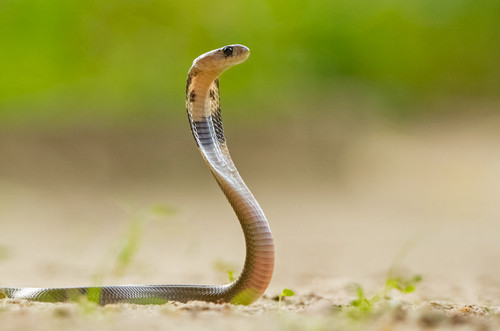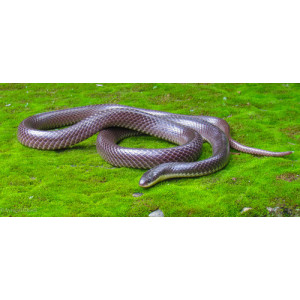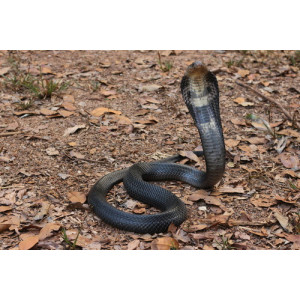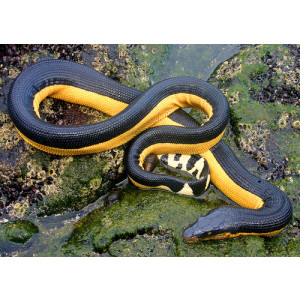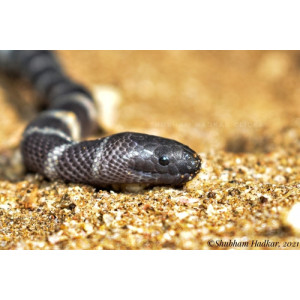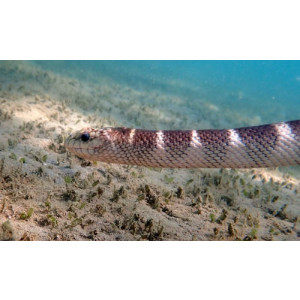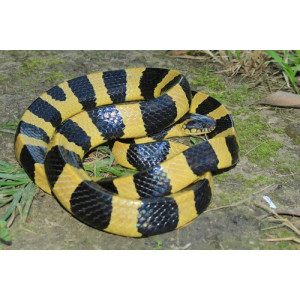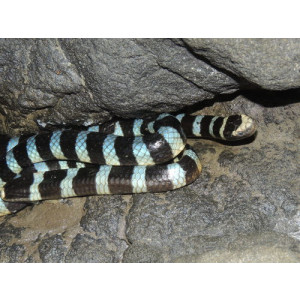Binocellate Cobra Did you see this animal?
Scientific Name : Naja naja
Family : Elapidae
Order : Squamata
Class : Reptilia
Phylum : Chordata
Habitat : Wetlands,Paddy fields,Open lands,Forests
Description : The Indian cobra varies in color and pattern throughout its range. Its ventral scales can be gray, yellow, tan, brown, reddish, or black. The dorsal scales may have a hood mark or light band, with speckles seen in adult specimens. The throat and ventral scales also have variable patterns, with a light throat area followed by dark banding in most specimens. Mottling is common in adults. There are lateral spots on the throat where the ventral and dorsal scales meet, positioned differently in different regions.
The Indian cobra can be found in dense or open forests, plains, agricultural lands, rocky terrain, wetlands, and even in urban areas up to 2,000 meters in altitude. They are absent from true desert regions and prefer to be near water. They hide in holes in embankments, tree hollows, termite mounds, rock piles, and small mammal dens.
Indian cobras are oviparous and lay 10-30 eggs in rat holes or termite mounds between April and July. Eggs hatch in 48-69 days and the hatchlings, measuring 20-30 cm, are fully functional and independent from birth with venom glands.
The Indian cobra's venom contains a potent neurotoxin and cardiotoxin that paralyzes muscles and can cause respiratory failure or cardiac arrest. Enzymes in the venom increase its spread. Symptoms may appear 15-120 minutes after the bite.
The Indian cobra can be found in dense or open forests, plains, agricultural lands, rocky terrain, wetlands, and even in urban areas up to 2,000 meters in altitude. They are absent from true desert regions and prefer to be near water. They hide in holes in embankments, tree hollows, termite mounds, rock piles, and small mammal dens.
Indian cobras are oviparous and lay 10-30 eggs in rat holes or termite mounds between April and July. Eggs hatch in 48-69 days and the hatchlings, measuring 20-30 cm, are fully functional and independent from birth with venom glands.
The Indian cobra's venom contains a potent neurotoxin and cardiotoxin that paralyzes muscles and can cause respiratory failure or cardiac arrest. Enzymes in the venom increase its spread. Symptoms may appear 15-120 minutes after the bite.
Distribution in Bangladesh
References:
description written by: Zarin Tasnim,Department of Zoology,University of Dhaka ; information source:IUCN Red List Bangladesh-2015,www.reptile-database.reptarium.cz; photo credit and photo copyright: Aakash Raut (iNaturalist user). more information please contact with us.
description written by: Zarin Tasnim,Department of Zoology,University of Dhaka ; information source:IUCN Red List Bangladesh-2015,www.reptile-database.reptarium.cz; photo credit and photo copyright: Aakash Raut (iNaturalist user). more information please contact with us.
